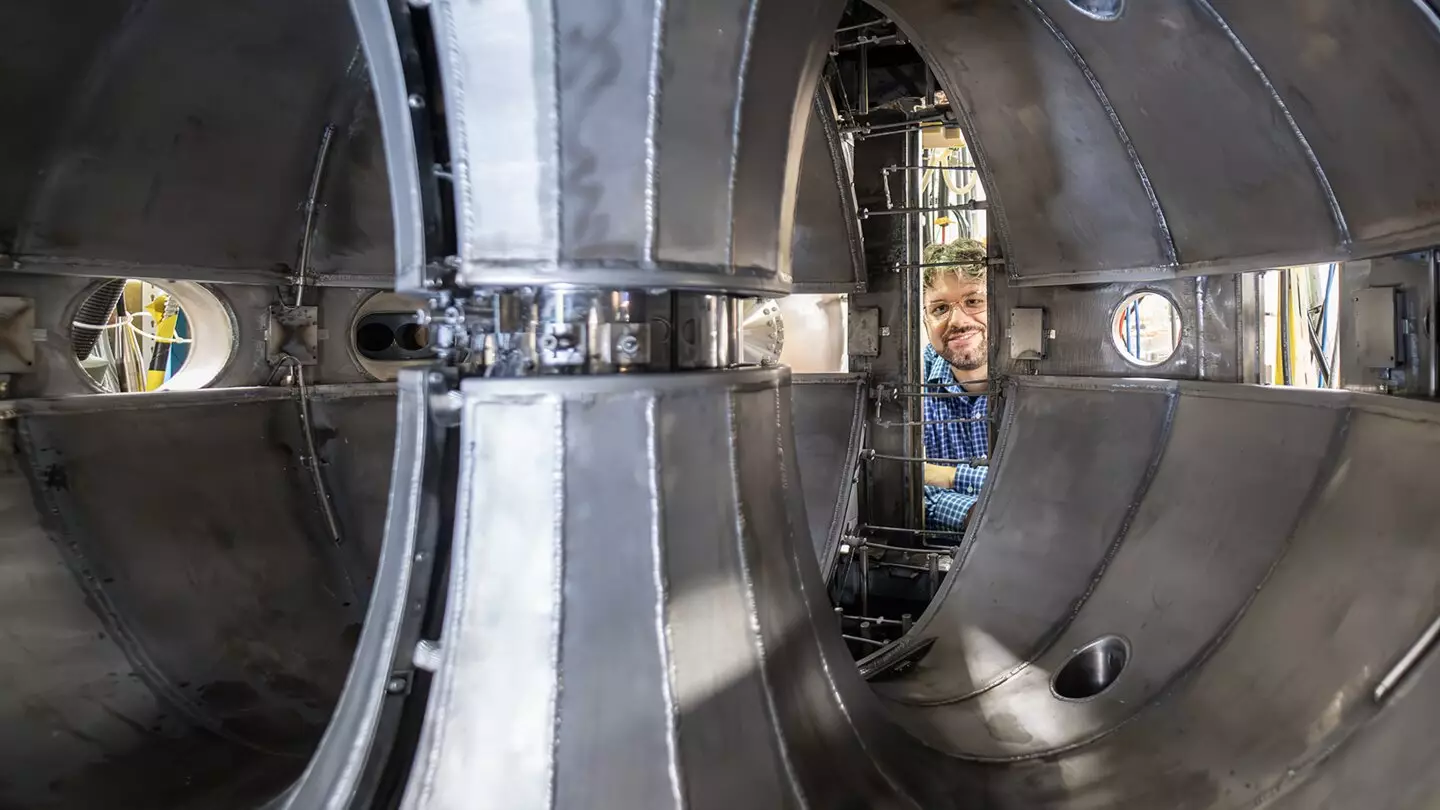Fusion, the process of combining atomic nuclei to release a tremendous amount of energy, holds great promise as a cleaner alternative to fossil fuels. One of the key challenges in fusion energy research is finding ways to efficiently harness this energy. Scientists at the Department of Energy’s Princeton Plasma Physics Laboratory (PPPL) are exploring the use of liquid lithium to enhance the performance of fusion devices called tokamaks. Recent findings from the Lab’s Lithium Tokamak Experiment-Beta (LTX-β) show that applying a coating of liquid lithium to the internal walls of the tokamak significantly improves the plasma’s properties and may contribute to the development of a practical fusion power plant.
Tokamaks are devices that confine and control the plasma using magnetic fields. The primary objective of these devices is to achieve better energy confinement, which would allow for smaller and less expensive machines. This improved efficiency would make fusion more practical and cost-effective, inspiring increased investments from governments and industry. Dennis Boyle, a research physicist at PPPL, emphasizes the importance of finding solutions to enhance energy confinement for the advancement of fusion energy research.
The recent experiments conducted by PPPL researchers involved applying a coating of liquid lithium to the internal walls of the tokamak. These experiments demonstrated that the liquid lithium coating helped maintain a hot edge of the plasma. Maintaining a hot edge is crucial for the researchers’ unique approach to fusion energy, as it contributes to the overall performance of the plasma. Previous experiments with solid lithium coatings also showed enhancements in plasma behavior, but liquid lithium proves to be more suitable for large-scale tokamaks, making it a promising solution for future fusion power plants.
The introduction of liquid lithium into the tokamak has several advantages for fusion energy research. Firstly, it could significantly reduce the need for repairs by acting as a protective shield for the inner walls of the device, which are exposed to extreme plasma heat. The liquid lithium absorbs a substantial portion of hydrogen ions escaping from the plasma, preventing them from being recycled back into the plasma as a relatively cold neutral gas. This low-recycling environment helps maintain a uniform temperature throughout the plasma, enhancing its heat confinement capabilities and reducing instabilities.
Another notable benefit of using liquid lithium is the increase in plasma density. When a beam of high-energy neutral particles is injected into the plasma to heat and fuel it, the liquid lithium allows for a more substantial density increase compared to solid lithium. This disparity is attributed to a small amount of lithium evaporating off the liquid walls of the reactor and entering the plasma. The presence of this lithium impurity alters the dynamics of charge exchange, enabling the plasma to retain added hydrogen ions without displacing other ions. As a result, the overall density of the plasma increases, further enhancing the potential for fusion energy generation.
While the positive results of using liquid lithium in fusion energy research are promising, implementing this solution in larger tokamaks poses challenges in terms of feasibility and cost. To confidently proceed with liquid lithium walls in future fusion devices, exploratory experiments at a smaller scale, such as the LTX-β, are essential. The research conducted at PPPL provides valuable insights into the potential benefits of liquid lithium and establishes a foundation for further studies and advancements in fusion energy research.
The utilization of liquid lithium in fusion energy research offers a range of benefits, including improved energy confinement, reduced repairs, and increased plasma density. The recent findings from PPPL’s LTX-β experiments show the promising potential of liquid lithium as a vital component in the development of fusion power plants. While there are challenges to overcome in implementing this technology on a larger scale, the ongoing research at PPPL paves the way for future advancements and brings us closer to harnessing fusion energy as a sustainable and clean power source.


Leave a Reply